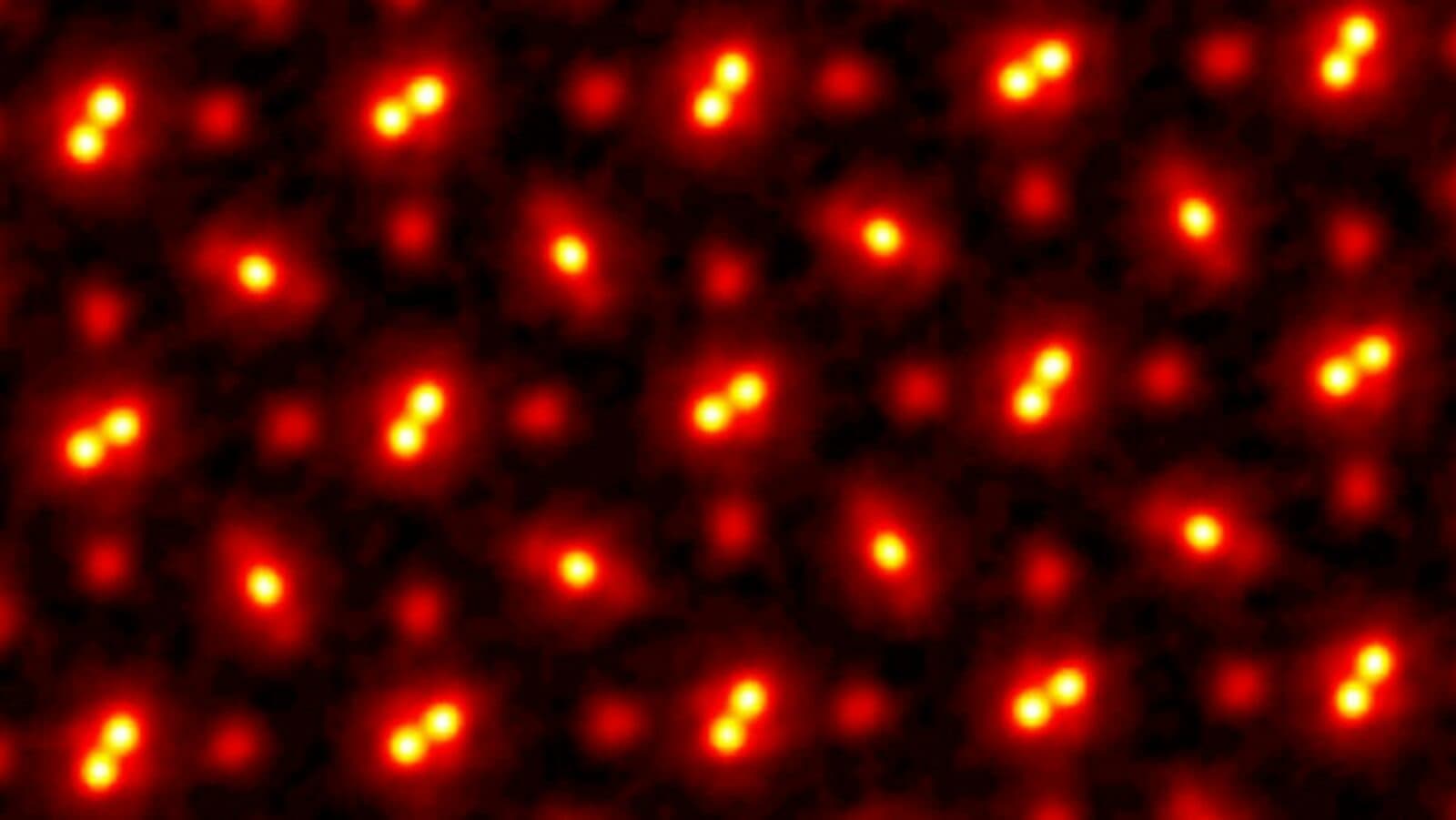Up Close and Personal
by Alan S. Brown
Atoms at high resolution and more from Kavli Institutes in Nanoscience

The Author
Imagine seeing images of atoms at such high resolution, the only blur in the photo is the quantum thermodynamic fluctuation of the atoms themselves. That is what David Muller, the co-director of the Kavli Institute at Cornell, has created. His new system not only doubles the resolution he achieved in 2018, but can find the location of atoms in much thicker samples, opening the door to some revolutionary new measurements in everything from computer chips to biochemistry. In other news, we discuss a better way to manage quantum chips, a hierarchical nanostructure that swipes water from fog at night and air in daylight, a superfluid that behaves in ways it should not, and a startup to make quantum modems.
Atoms—up close and personal
A research team led by Kavli Institute at Cornell for Nanoscale Science co-director David Muller has set a record for the resolution of atoms. In fact, the resolution is so good, only the quantum-level thermal jiggling of the atoms blurs the image. Muller set the record in 2018 with a process called electron ptychography (which tripled previous resolutions). The problem was that it worked only with atomically thin samples. This is because electron ptychography works by sending a beam of electrons through a sample and working out the position of the atoms by how the electrons scatter as they emerge from the other side of the sample. This is a very complex calculation that worked only because thin samples had less scattering. Improved algorithms now make probing larger samples possible. Muller said the new technique opens a new world of measurement possibilities in applications as diverse as semiconductors, catalysts, quantum materials, and even cells.
Cryo controller solves quantum bottleneck
Right now, quantum computer researchers must hard-wire every qubit (think of them as quantum transistors) on a quantum computer directly to instrumentation used to control and measure what is going on. That creates temperature mismatches between qubits operating at cryogenic temperatures and the room-temperature wires and electronics that connect those qubits to the outside world do not. Keep those wires untangled while coping with large temperature mismatches gets even worse when you try to scale up from a few dozen qubits to tens of thousands or millions of qubits on a chip. That is why Lieven Vandersypen, a member of the Kavli Institute of Nanoscience Delft, developed a silicon controller that operates at cryogenic temperatures and manages connections to qubits the way a conventional silicon chip manages transistors. The chip also contains two spin qubits (a double quantum dot) that it manipulates with short bursts of microwave radiation.
24/7 water harvesting from nano-cactus spines
A new type of membrane nanoscale “trees” shaped like cactus spines harvests water from fog at night and from air during day. Developed in the lab of Julia Greer, the director of Caltech’s Kavli Nanoscience Institute, the demonstrator marks the first time two such technologies have been used together. The technology involves an array of tiny spines that resemble cactus spines. which are made from hydrogels (networks of water-loving polymers) and printed on a membrane. At night, the spines attract tiny droplets of water suspended in fog. During the day, sunlight heats water into steam that condenses onto the spines. In tests, at night, sample materials 55-12 square centimeters collected 35 milliliters of water at night and 125 milliliters during the day.
Superfluid reacts super strangely
Superfluids are fluids that have zero viscosity, that is, they can flow through even small channels without any friction. Put them in a container, give them a stir, and they will form a vortex that never stops spinning. Yet Jeevak Parpia, a member of the Kavli Institute at Cornell, was drawn to them because they seemed like a good way to study what happened after the Big Bang, when states of matter underwent significant changes. He was drawn to helium-3, which remains a liquid down to absolute zero (0 K). At a scant fraction of a degree above that temperature, it becomes a superfluid that Parpia thinks is very much like the composition of the earliest moments of our universe. In studying this, Parpia has found something unexpected—a phase transition between two different superfluid states when theory says it should only remain in one state. This has got his team thinking about maybe engineering new states, as well as new knowledge about superfluids and how our universe evolved.
Quantum modem startup gets funding
QphoX, a startup launched by Kavli Institute of Nanoscience Delft member Simon Groeblacher, has received €2 million in funding to commercialize a quantum modem that will enable quantum computers to talk with one another. The device will network together multiple processors, letting quantum computers to scale beyond tens and hundreds of qubits they now work with. The quantum modem works by coupling microwave and optical photons through an intermediary mechanical resonator. Their goal is to create a modem that achieves low-loss, high-fidelity transmission of quantum states between remote computers at room-temperature.